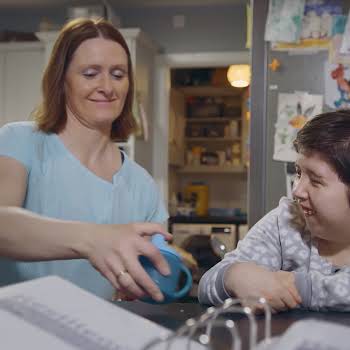Study finds autistic girls diagnosed later than boys because they’re adept at “camouflaging” autistic traits
By Lauren Heskin
22nd Oct 2020
22nd Oct 2020
A number of studies have found that autistic girls are better at camouflaging autistic traits than boys in order to fit in, resulting in a late and sometimes missed diagnosis.
Autism spectrum disorder is considered more common in boys; they are four times more likely to be diagnosed with it than girls. However, some studies are now finding that the discrepancy between genders might not be as high as we think. This is due to camouflaging techniques used by girls that hide their disorder through the early stages of childhood.
Autism is typically diagnosed around the age of three in boys and four in girls. Research has shown that early detection and intervention can greatly improve outcomes. Delayed diagnosis means autistic children don’t receive the specialised support they require, putting them at a higher risk of mental health problems, including depression and suicide.
This study, along with a number of others it references, found that autistic girls are adept at “camouflage”, which refers to “strategies used to appear less autistic in social interactions.” There are two different types of camouflaging. Compensatory camouflaging is the processes required to recognise the gap between how an autistic person feels they are different from others and how they should outwardly present themselves in a social environment, while the other is behavioural camouflaging. This refers to specific behaviours performed in order to bridge that gap by hiding autistic traits.
A group of autistic women interviewed for one of the studies described strategies that included “learnt phrases and facial expressions from TV, books and magazines, social imitation, and masking autistic traits.”
These techniques start from a young age. Autistic girls tended to have better non-verbal communication skills and would spend more time with their peers, even if they weren’t directly interacting with them, than autistic boys and were more likely in general to use behavioural camouflaging. One study gives a playground example that while an autistic boy might sit apart from his peers, an autistic girl might play near them without actually engaging with them, allowing their disorder to “fly under the radar”.
However, this did not carry over to teenage years, when social interaction becomes much more complex and the disparity much greater. One study showed that teenage girls used “‘masking’ strategies to appear more socially competent, which were often motivated by a desire for friendship.” However, these learned childhood strategies were too simple for developing teenage relationships and therefore autistic teenage girls struggled to maintain friendships beyond the initial stages.
Such late diagnosis can lead to lead to long-term struggles for autistic women. Their ability to recognise the growing gap between their own social abilities and that of their peers led to “difficulties forming friendships and feelings of rejection”. Camouflaging also led to difficult psychological questions, with one teenager describing it as an “identity crisis” because they were “pretending to be the same as everyone else”.
As a result, many autistic women reported issues with their mental health, with depression, anxiety and eating disorders being the most common.
Featured image: Jelleke Vanooteghem on Unsplash
Read more: Clonakilty celebrates two years of being Ireland’s first autism-friendly town
Read more: Will students with ASD and health conditions be left behind? School guidelines leave a lot unsaid
Read more: ‘I am tired of people saying I don’t look or sound autistic. Attitudes need to change’























